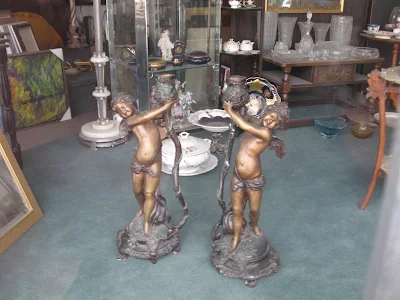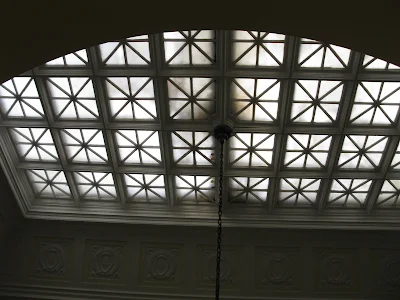






 No. 16 (Red, Brown, and Black) (1958)
No. 16 (Red, Brown, and Black) (1958)
 No. 3/ No. 13 (1949)
No. 3/ No. 13 (1949)
 No. 10 (1950)
No. 10 (1950) 









I have worn the clothes of the dead
already frayed when he died, I wore it
another dozen years;
my stepfather's scarves--
blue wool from Scotland,
white silk, and a yellow
Viella shirt. These were their
second skins I pulled on
inhabiting the shape of their
old clothes for years before
the clothes wore out;
days governed by clothes
unfolded and worn,
then thrown into a laundry hamper
or balled and kicked across
the floor. Now those clothes
are gone—eaten by moths,
torn into holes and rips
not even good as rags. I wore
my own clothes
like the clothes of the dead:
brown corduroy trousers, a sweater
shapeless and small even when new;
I pulled it over my head and assumed
the facial expressions of an old man--
these clothes aged me
into someone twice my age
sexless and afraid of life thinking
of retirement and paying off a mortgage;
the penalty of a marriage of lies
held together by threads,
thread-bare of love
a wardrobe
of secrets and despair.
Today I burned six shirts,
two sweaters and trousers:
I burn the past out of my
life, return to living
from dying, take what
I have been,
clothes that made me
someone I didn't want to be
or someone I was but never liked,
clothes that are days and months and years
of a life I gave up
to fear and despair.
Now those clothes are gone:
ashes of clothes
ashes of former selves
ashes of time and space
ashes of words and notebooks
ashes of thoughts
and flesh and blood
ashes of one who surrendered.
Two Tales
1. The Well
now he struggled to escape
the bottom of a well
where once he lay curled and fetal,
half-submerged in mud.
He could see her above gesturing to him,
holding her forefinger and thumb
together in a circle, then
her hand opened revealing
a message only he could see
written on her palm. He climbed
the cold stone wall of the well,
back pressed against the opposite
wall; gradually he
mounted the well
stopping only to groan
and scratch words on the stones
with his finger nails.
She held out her hand;
oh, she had helped him
all along this journey. Now he
was climbing over the lip
of the well, afraid
of what he might find above.
He remembered the long
fall below him, the
seemingly bottomless well,
the circle of black water so far
below that should he fall
his bones and spirit
would be broken, he would
disappear into the nothingness
of the well's great darkness.
2. The Amphora
Retrieved from sea-bottom,
caught in a fisherman's net,
two ancient amphoras
containing honey, still liquid
and golden after night's darkness.
Decorating one amphora are images
of men and women in positions of love:
fondling breasts, couplings
of various fashions, the man
between the woman's legs,
the woman eased on top
of the man, the man
from behind thrusting with
hands beside her hips or on
her buttocks. Still other
images of perfection on
the second amphora:
the bee-keeper at the hive,
the farmer in his field
standing in full sunlight
admiring the season's crops;
not far away
lovers transform themselves
into God and Goddess, lose
the illusion of separateness
and return us wholly
to ourselves awakened to love.